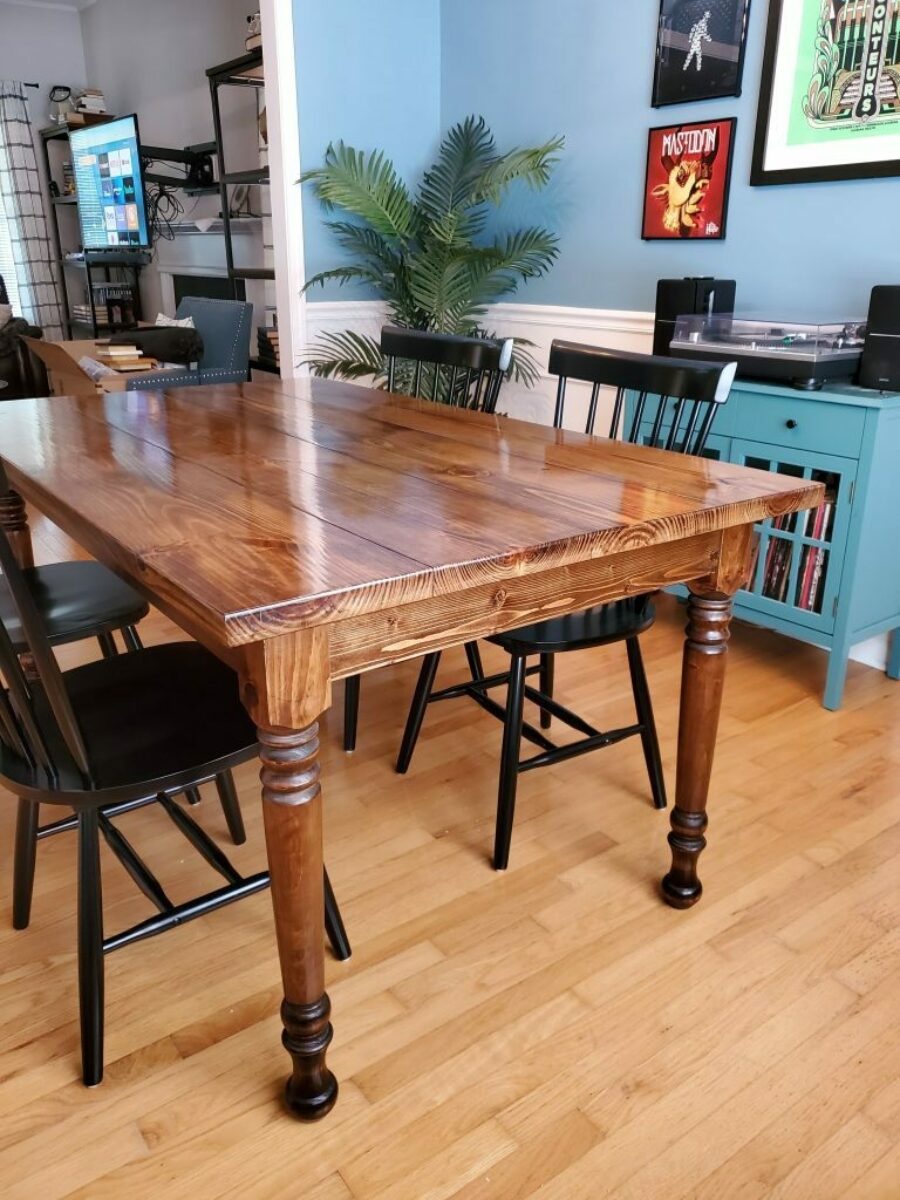From Conventional to Modern: Discover the Ideal Eating Area Table Legs for Your Style
While traditional designs such as cabriole and turned legs stimulate a feeling of timeless refinement, contemporary styles like barrette and geometric alternatives present a chance for striking aesthetic interest. As you think about these components, the question stays: just how can you seamlessly integrate these diverse leg designs to develop an unified dining experience?
Comprehending Table Leg Styles
The range of dining area table leg designs can substantially influence both the aesthetic appeals and capability of the room. Each leg design adds one-of-a-kind aesthetic components and sensible attributes, dealing with diverse design preferences and usage needs. Recognizing these designs is crucial for selecting the right table that straightens with your total indoor style vision.
For example, tapered legs provide a clean, classic appearance that can boost an area's sophistication, while pedestal bases offer stability and maximize legroom, making them ideal for smaller sized rooms. Barrette legs, a characteristic of mid-century modern-day layout, present a commercial flair, permitting a ventilated, open feel. Trestle legs evoke rustic beauty, supplying robust assistance and a sense of eternity.
Wooden legs can bring warmth and appearance, whereas metal choices often communicate a sleek, modern ambiance. Eventually, recognizing table leg styles is crucial for producing a cohesive dining location that shows individual style while making certain practicality and comfort.
Standard Table Leg Options
When selecting dining-room table legs, conventional choices usually embody ageless style and craftsmanship. These designs show an abundant heritage and a dedication to high quality, making them suitable for those who value classic visual appeals.
One of one of the most famous typical leg styles is the cabriole leg, characterized by its graceful curved shape. This design commonly includes attractive makings and is most typically found in Queen Anne and Chippendale furnishings. One more preferred alternative is the turned leg, which flaunts a collection of smooth, rounded forms that give a classic appearance while maintaining security.
Moreover, the straight leg, while straightforward, supplies a basic and strong structure that can mix seamlessly with a variety of tabletop designs. For those attracted to ornate outlining, claw-and-ball feet legs evoke a sense of grandeur and can serve as a spectacular focal factor in any kind of eating area.
Finally, pedestal bases, although not purely legs, supply an alternate standard option that enables enough legroom and can be beautifully sculpted. Each of these standard leg designs adds to the general ambiance of an eating space, marrying feature with aesthetic appeal.

Modern Table Leg Designs
Modern table leg layouts provide a varied variety of designs that highlight cutting-edge materials and tidy lines. These styles frequently focus on functionality while acting as striking centerpieces within an eating space. Minimalist appearances are common, with legs crafted from materials such as steel, glass, and engineered timber, which add to a airy and contemporary feel.
One preferred design is the barrette leg, defined by its slim, conical framework that provides security without frustrating the table top (dining room table legs). This style is often discovered in mid-century modern-day furniture and can effortlessly enhance various table forms. An additional trend is the usage of geometric forms, where legs may tackle angular or asymmetrical kinds, including visual rate of interest and a touch of creativity

Blending Designs for Unique Areas
Commonly, house owners look for to produce one-of-a-kind dining rooms that reflect their individual design by blending various layout components. This technique enables the consolidation of diverse visual appeals, resulting in an click to read more unified yet distinct setting. Coupling a rustic wood table with sleek, modern-day metal legs can create a distinctive contrast that elevates the space's overall allure.
Furthermore, incorporating vintage table legs with contemporary table tops can evoke a feeling of history while maintaining a contemporary sensibility. Such mixes not only showcase specific taste yet likewise encourage imagination, allowing house owners to curate a space that really feels both personal and welcoming.
Color plays a critical function in this mixing process; choosing table legs that enhance or contrast with the existing color pattern can improve visual passion. For example, whitewashed legs can soften the boldness of a dark table surface area, creating a balanced visual.
Tips for Picking the Right Legs
Selecting the right table legs is vital for achieving both functionality and visual appeal in your dining room. Begin by considering the general design of your area. Traditional settings profit from legs that include intricate carvings or turned styles, while modern rooms might call for sleek, minimal designs.
Following, analyze the height and stability of the legs. dining room table legs. Standard eating tables vary in between 28 to 30 inches in elevation, so ensure the legs match this dimension for comfort. Furthermore, durable materials, such as wood or metal, can improve stability and durability
Examine the leg form too-- alternatives consist of right, tapered, or stand layouts. reference Straight legs offer a classic look, while tapered legs can include a touch of elegance. Pedestal bases provide ample legroom and are optimal for smaller spaces.
Conclusion
In summary, picking the suitable dining area table legs calls for careful consideration of both conventional and modern designs. By balancing leg design, height, and material with the total design, a cohesive and welcoming atmosphere can be attained.
The variety of eating room table leg designs can considerably influence both the looks and capability of the area. Ultimately, comprehending table leg designs is crucial for producing a natural dining location that reflects personal style while making certain functionality and convenience.One of the most renowned typical leg styles is the cabriole leg, defined by its elegant curved form. Straight legs supply a traditional appearance, while tapered legs can add a touch of sophistication.In summary, picking the optimal eating room table legs needs careful consideration of both contemporary and typical designs.